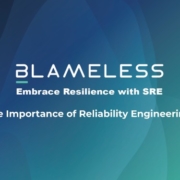The application development landscape has fundamentally changed in recent years. In a recent interview with Ambassador Labs, Mario Loria from CartaX said he believes this is still uncharted territory, particularly for developers in the cloud-native space. As he sees it, site reliability engineers (SREs) play a key role in guiding developers through the learning curve toward comprehensive self-service of the supporting platforms and ecosystem, and ultimately to service ownership. This requires a major shift in company and management culture, and developer (and SRE) mindset and tooling as well as insight to make the journey to full lifecycle ownership not just smoother and more transparent but also technically feasible.
Two Worlds Colliding: The Monolith and Service-Oriented Architecture
The traditional monolith continues to exist in parallel with cloud-native application development. The operations side of the equation, according to Mario, understands that this has caused a big shift in deploying, releasing, and operating applications, and now the role of SREs is to help developers understand and own this shift. Developers know how to code, but building in the necessary understanding (and ownership) of the “ship” and “run” aspects of the lifecycle introduces a steep learning curve. For developers, this means taking on new responsibilities with the support of SREs.
Source de l’article sur DZONE







